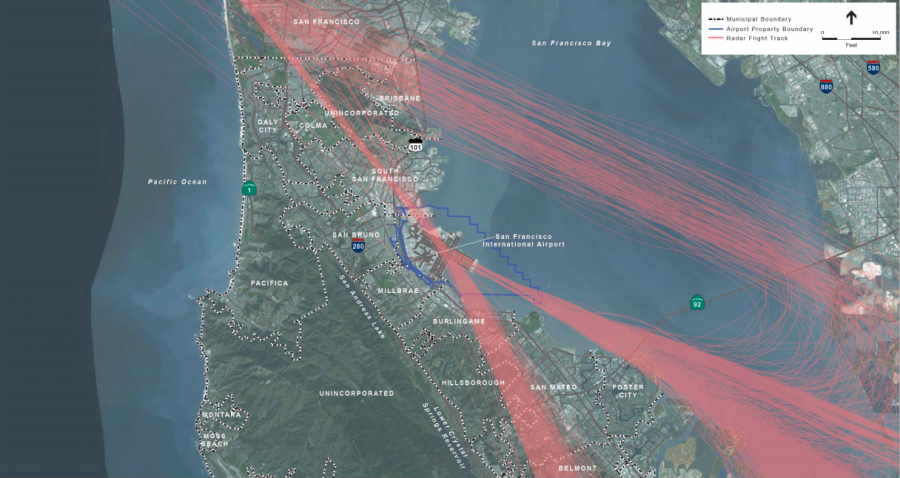A problem in plane sight
November 20, 2018
The low rumble of airplanes is a sound all too familiar to the residents of the San Francisco Bay Area. Home to three of the busiest airports in the United States—San Francisco International Airport (SFO), Oakland International Airport (OAK) and San Jose International Airport (SJC)—the Bay Area collectively served 76 million passengers in 2017 and shows no signs of decreasing.
The radar paths of planes landing on runway 28L and 28R, the most common approach to SFO, in 2014.
Residents recently began complaining about the relentless bombardment of overhead airplanes. In order to provide information to the Bay Area communities, Rep. Jackie Speier hosted a public town hall hearing on Oct. 23 at the Skyline College Theater, along with retired United Airlines captain Kathleen Wentworth, SFO airport director Ivar C. Satero and Kaplan Kirsch Rockwell law firm agent Peter J. Kirsch.
Although there has been a 30 percent increase in passenger growth over the past five years at SFO, there has only been a 9 percent increase in operations.
“Throughout our history [at SFO, we’ve advocated for] taking full advantage of industry abilities to fly more people with less operations,” Satero said.
At the town hall, it was revealed that the main culprit for the increased airplane noise was the implementation of the new Federal Aviation Administration (FAA)-led Next Generation Air Transportation System, which aims to switch the old radar navigation system for a safer, more efficient and predictable GPS navigation system. Although it is very successful in these respects, the new GPS system causes airplanes to fly more accurately, concentrating the noise pollution in specific areas.
For the most part, these issues are outside the jurisdiction of SFO authorities, since access to international airports is federally controlled. Furthermore, the FAA considers investments outside of a 65-decibel level area to be a diversion of federal funds. This area is almost exclusively limited to areas of South San Francisco, San Bruno and Daly City.









































